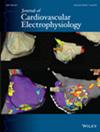Contemporary Study of New Onset Atrial Fibrillation Treatment Strategies at a Large Academic Tertiary Care Center
Abstract
Background
Early rhythm-control after atrial fibrillation (AF) incidence is associated with improved cardiovascular outcomes. Moreover, AF ablation provides more effective rhythm-control than antiarrhythmic drugs (AADs). The extent of adoption of contemporary trials and guidelines for the management of new onset AF is unknown.
Objective
In this observational retrospective study, we sought to evaluate treatment pathways for new onset AF at a large tertiary academic medical center within the last 6 years.
Methods
We performed a systematic search within our institutional TriNetX database to identify adult patients who (1) had new onset AF between January 2018 and January 2023, (2) did not have surgery or thyrotoxicosis within 1 month of incident AF diagnosis, and (3) had at least one visit at our center > 6 months after initial AF diagnosis. Patients with prior AF diagnosis were excluded. We identified the initial three lines of treatment administered following AF diagnosis, including rate- or rhythm-control strategies with AADs or ablation therapy.
Results
The cohort included 24 990 patients (mean age at diagnosis 69.8 ± 13.1 years, 58% male). During follow-up, 7130 (29%) received rhythm-control, 9760 (39%) received rate-control, and 8100 (32%) received neither. Rhythm-control consisted of AADs in 4610 (18%) and AF ablation in 2530 (10%). As first line therapy, 12 055 (48%) patients received rate-control, 3919 (16%) received AADs and 916 (4%) underwent AF ablation.
Conclusion
Most contemporary patients with incident AF at a large US academic tertiary center either received no rate or rhythm intervention or only rate-control.

 求助内容:
求助内容: 应助结果提醒方式:
应助结果提醒方式:


